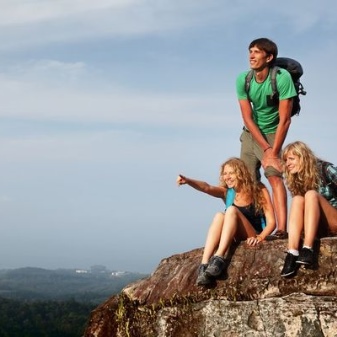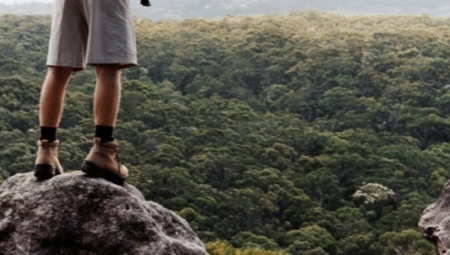It would seem that socks are such a trifle; you should not pay attention to them. But experienced tourists and participants in long-term expeditions will confidently tell you that this is not so. Fortunately, high-tech products made of modern materials replaced the grandmother's woolen options with fleece for travel. These socks, designed for a long walk over rough terrain, are called trekking.
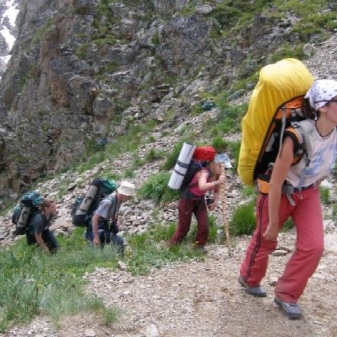
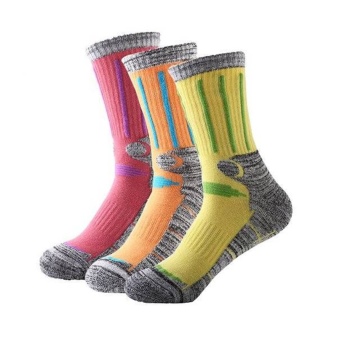
Benefits
- They fit the leg very tight, do not rub on the skin during active walking. Therefore, the opportunity to earn corn is practically absent.
- Special weaving of fibers, reinforcement in the toe and heel will not allow the sock to break. Abrasion of the product is very slow. These socks withstand several seasons of active use.
- Models for different sports are developed taking into account the different load on the legs during movement. Models for trekking and skiing or mountaineering will vary significantly. This allows the legs to feel better in an appropriate environment.
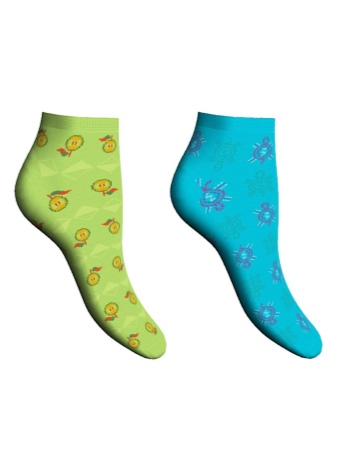
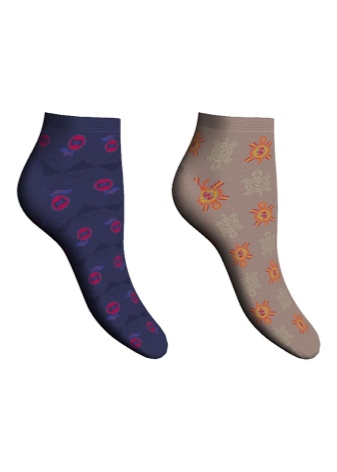
- Almost all models are thermal socks. This means that all technologies and design features are aimed at excessive removal of moisture from the foot. Therefore, even if the feet are wet, drying will happen very quickly, and the socks will not allow the feet to freeze.
- Trekking models have excellent breathing properties. They perfectly let air through, preventing the foot from fogging.
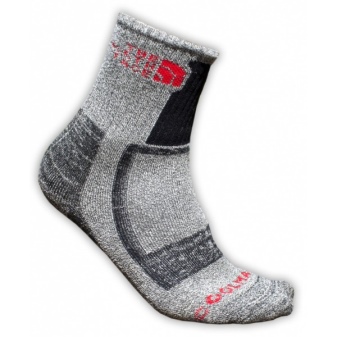
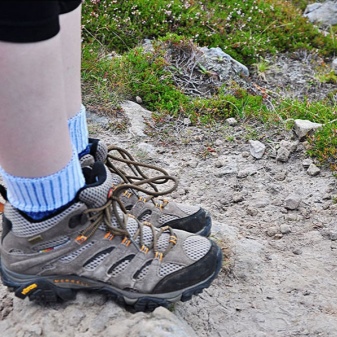
- Some models have a pronounced compression effect. Such socks will perfectly maintain muscle tone, improve blood circulation and prevent legs from getting tired quickly.
- Often the fibers are treated with a special antibacterial solution or special antiseptic threads are added. These technologies are designed to prevent the growth of bacteria and save from unpleasant odors.
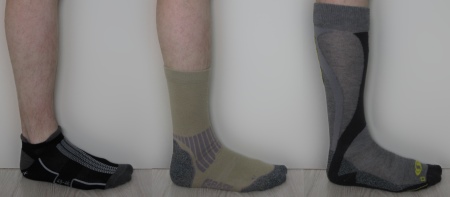
Main characteristics
All tracking models are made from a mixture of synthetic and natural fibers or they can be completely synthetic. However, lovers of natural materials should not be scared. Indeed, the distinctive properties that the options for trekking possess are possible only with the use of artificial fibers.
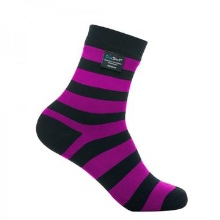
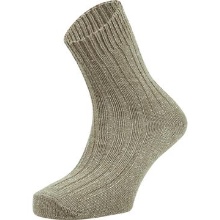
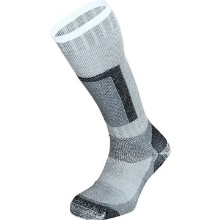
The length of the top is another feature that emphasizes the purpose of the sock. Shortened models are purchased by fitness enthusiasts exercising indoors.
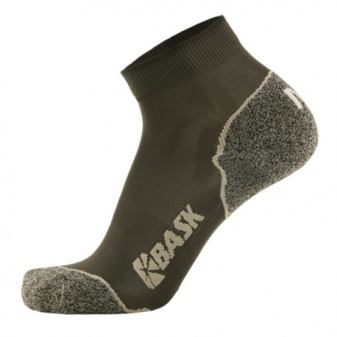
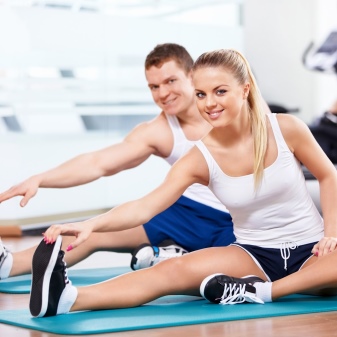
The standard shaft length is the most popular model. You can call it multisport.
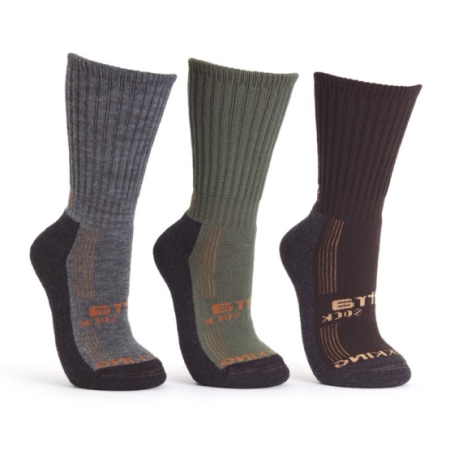
But elongated options are most often used by climbers and tourists on their long trips.

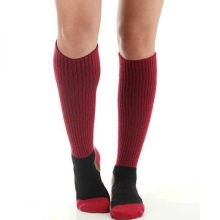

Product density is an essential detail when choosing. Thin socks are suitable for summer activities or indoor training.
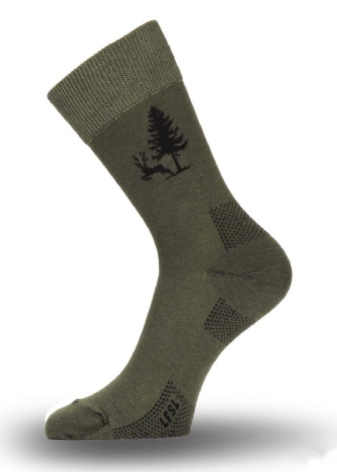
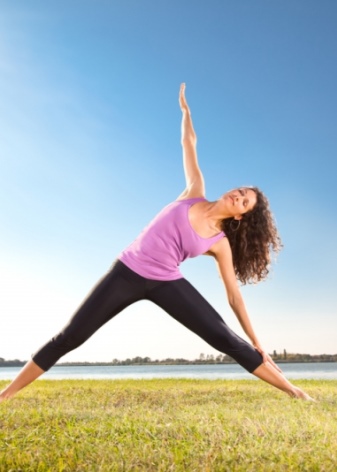
Medium-density socks are universal, they have enhanced wear-resistant characteristics and are very durable. Often have additional layers in the area of the fingers.
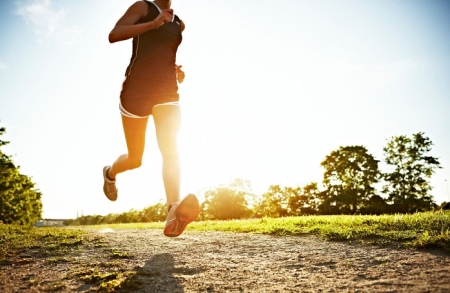
And finally, the models for extreme conditions are the densest. Most often made of several layers of fibers, each of which has its own function.

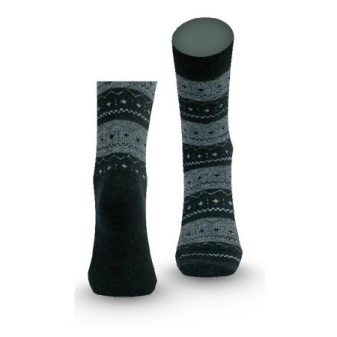
Additional technology
Various manufacturers are striving to improve their products in order to take a leading position in the market.
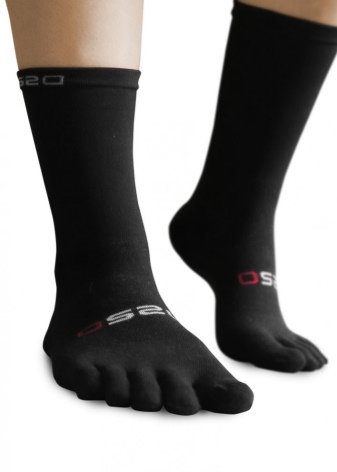

In various specialized models, you can find the following user-friendly nuances:
- Special pads at your fingertips protect against constant pressure on the inside of the boot, especially during a long descent from the mountain.
- To protect the Achilles tendon, more wear-resistant shock-absorbing materials are used to protect this part of the foot from constant friction against the edge of the boot.
- Thick winter models use special rods to improve the breathability of the product.
- To support the ankle, a special elastic bandage is used, which, like an elastic bandage, protects the ligaments from stretching.
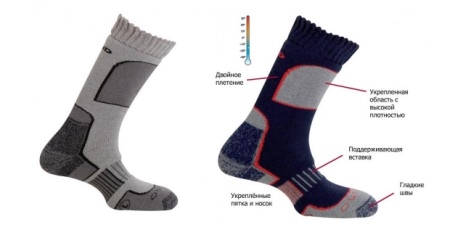
How to choose?
First of all, it is necessary to determine the conditions in which to operate the socks.

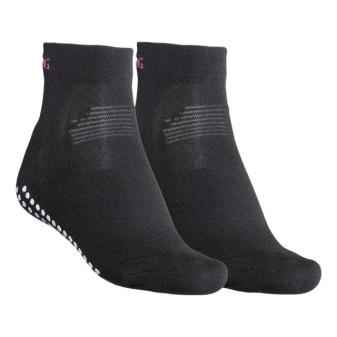
Fond of fitness - summer socks with low shafts will suit you. Their main function will be the removal of excess moisture from the surface of the skin.
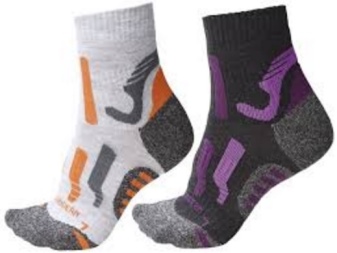

Are you going to climb to the top of Elbrus - you just need tight socks with an increased boot.

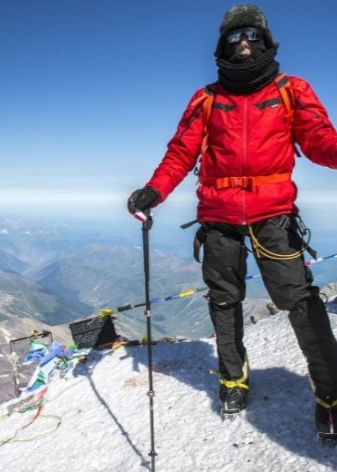
Another important factor is size. Modern materials used in the manufacture of virtually no shrinkage during washing and operation.
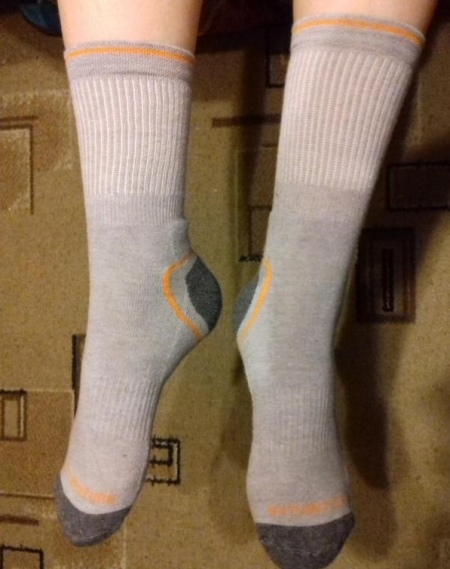
Manufacturers produce, as a rule, 4 standard sizes of socks. Your true size should be approximately in the middle of the typical. Feel free to ask the store consultant for a table of typical sizes.

Threads should not stick out of a quality product, and the seams should be outward and always flat. This will save the skin from corns.
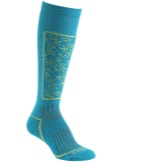

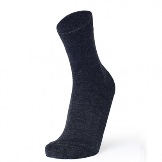
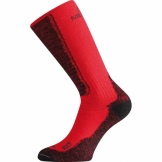
Popular brands
Lorpen is a company originally from Spain. At the dawn of their activities, they were engaged in tailoring socks to the world's largest sports corporations. Currently it is an independent enterprise. Recognized world leader among companies engaged in the production of trekking socks.

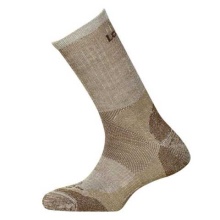

Norveg is a German company specializing in the production of thermal underwear. In its products it successfully combines natural fibers and modern thermolite material of its own design.
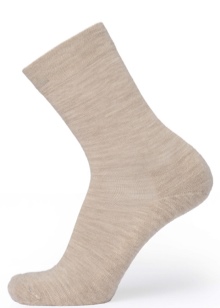
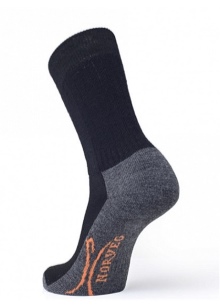
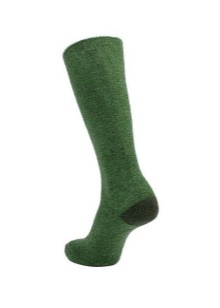
Decathlon is a French sports brand. Widely represented in the domestic market. Models differ in affordable prices, while maintaining unique technological characteristics.
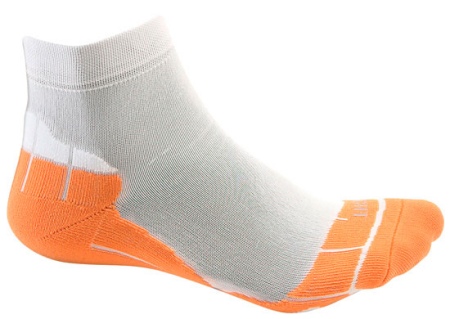
X-Socks is a highly specialized company from Switzerland that produces only socks. Trekking models are very diverse and of the highest quality.

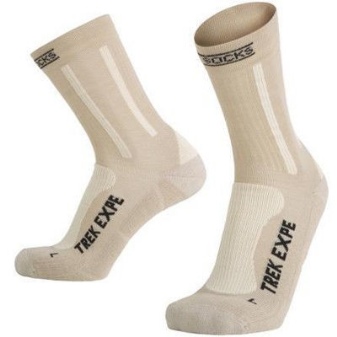
DexShell is the first company to invent waterproof trekking models. The patented Porelle membrane prevents moisture from entering, but it releases excess perspiration perfectly. Feet in DexShell socks. Feet dry absolutely in any weather.
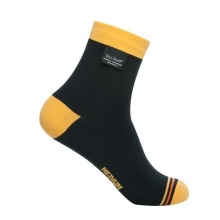

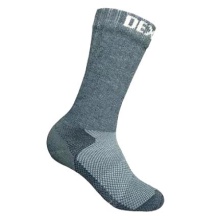
Reviews
Reviews on trekking socks are mostly positive. All users, both amateurs and professional travelers and athletes, note the high technical characteristics and practicality of the models. By choosing a product from a reliable manufacturer, you can provide comfort and safety for your legs for a long time.

